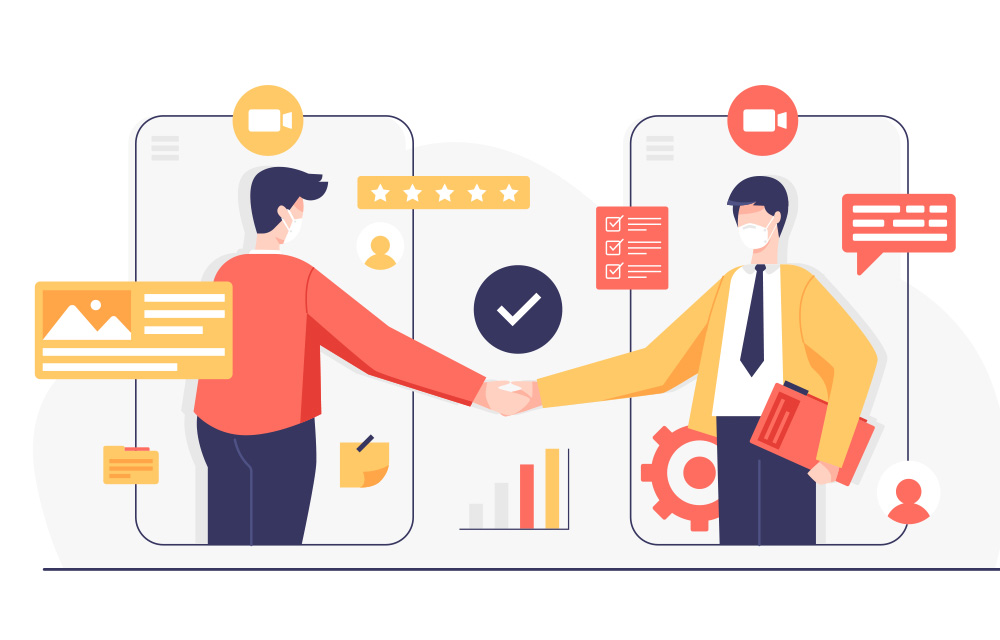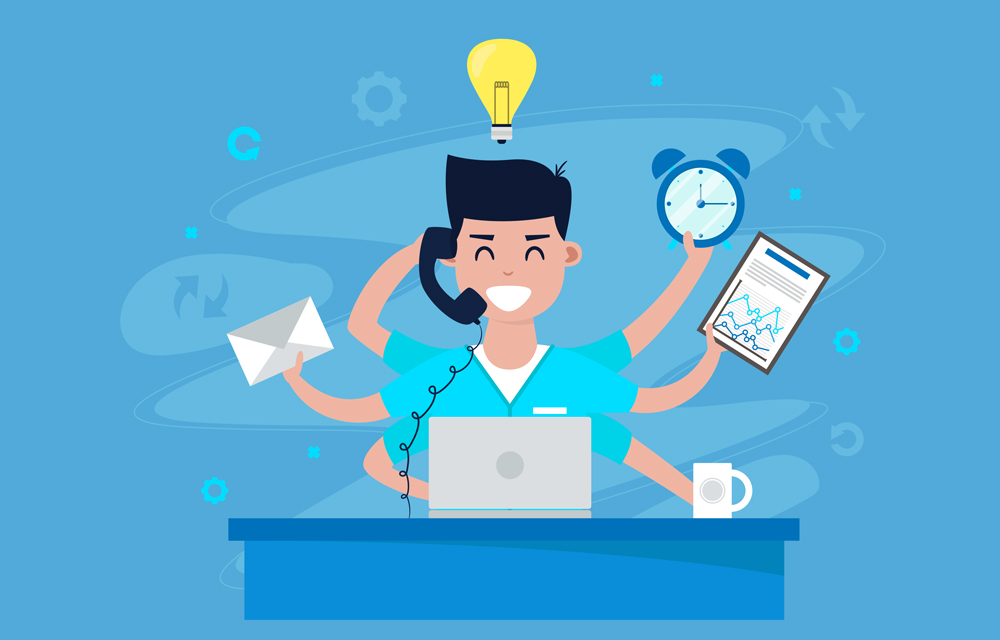Introduction
In today’s competitive landscape, effectively managing customer expectations is essential for business success. Customer expectations encompass beliefs about quality, service, and delivery, and meeting or exceeding them can lead to satisfaction and loyalty, while unmet expectations often result in disappointment and lost business.
In this blog, we’ll explore strategies for understanding, managing, and exceeding customer expectations. From identifying customer needs to communicating clearly and delivering consistently, these actionable insights will help you foster strong relationships with your customers and stand out in the marketplace.
Understanding Customer Expectations
Customer expectations refer to the preconceived notions or beliefs that consumers have about the quality, performance, and service they should receive from a product or brand. These expectations are shaped by a variety of factors, including previous experiences, marketing messages, word-of-mouth recommendations, and even societal standards.
Types of Expectations
1. Functional Expectations: These are the practical aspects of a product or service that customers anticipate. For instance, a customer purchasing a smartphone expects it to have certain features, such as a good camera and a long battery life. In service industries, functional expectations might include speed, efficiency, and reliability.
2. Emotional Expectations: Beyond the functional, customers often seek emotional connections with brands. This includes feelings of trust, empathy, and personalized service. A customer may expect to feel valued and understood, which enhances their overall experience and loyalty.
Researching Customer Expectations
Understanding customer expectations begins with effective research. By gathering insights directly from your customers, you can tailor your services and products to meet their needs. Here are some key methods and best practices for researching customer expectations:
1. Methods to Gather Insights
Surveys and Questionnaires:
- Designing Effective Surveys: Create targeted surveys that ask specific questions about customer needs, preferences, and experiences. Use a mix of quantitative (multiple-choice) and qualitative (open-ended) questions for comprehensive insights.
- Timing Matters: Send surveys after key interactions, such as purchases or customer service calls, to capture immediate feedback.
- Incentives: Consider offering discounts or entry into a prize draw to encourage participation and increase response rates.
Customer Feedback and Reviews:
- Online Reviews: Monitor reviews on platforms like Google, Yelp, and social media. Analyze comments to identify common themes regarding expectations and experiences.
- Direct Feedback: Encourage customers to share their thoughts through comment cards, email, or live chat. Make it easy for them to provide feedback.
Social Media Listening:
- Monitoring Conversations: Use social media listening tools to track mentions of your brand. Pay attention to both positive and negative comments to gain insights into customer perceptions and expectations.
- Engaging with Customers: Actively engage with customers on social media platforms. Ask questions or create polls to gather real-time feedback on expectations.
Focus Groups:
- In-Depth Discussions: Organize focus groups with a diverse set of customers to discuss their expectations in a moderated environment. This allows for deeper insights and immediate follow-up questions.
- Product Testing: Use focus groups to test new products or services before launching, gathering feedback on how well they meet customer expectations.
2. Analyzing Data
Identifying Trends and Patterns:
- Quantitative Analysis: Use statistical tools to analyze survey results. Look for patterns in responses that indicate common expectations among your customer bases.
- Qualitative Analysis: Review open-ended feedback for recurring themes, sentiments, and suggestions. This can highlight areas for improvement or innovation.
Segmentation:
- Customer Segmentation: Divide your customer base into segments based on demographics, behaviors, or preferences. This helps you understand how different groups have varying expectations and tailor your approach accordingly.
- Personalized Insights: Tailor your research findings to specific segments to develop targeted strategies for meeting diverse customer needs.
Creating Customer Personas:
- Developing Personas: Use insights gathered from your research to create detailed customer personas. These should include information about demographics, motivations, challenges, and specific expectations.
- Application of Personas: Utilize these personas in decision-making, marketing strategies, and product development to ensure alignment with customer expectations.
3. Utilizing Customer Expectations Research
Incorporating Findings into Strategy:
- Actionable Insights: Use the insights gathered to inform your business strategies, marketing campaigns, and product development. Ensure that your offerings align with what customers truly expect.
- Continuous Monitoring: Regularly update your research methods and findings to stay current with changing customer expectations and market trends.
Creating a Feedback Loop:
- Ongoing Engagement: Establish channels for ongoing customer feedback to create a continuous feedback loop. This helps you adapt to shifting expectations over time.
- Iterative Improvements: Use customer feedback to make iterative improvements to your products and services, fostering a culture of responsiveness and agility.

Setting Realistic Expectations
Setting realistic expectations is crucial for maintaining customer satisfaction and building trust. When expectations are aligned with what you can deliver, customers are less likely to be disappointed and more likely to become loyal advocates for your brand. Here are key strategies to effectively set realistic expectations:
1. Importance of Transparency
Clear Communication:
- Honesty is Key: Be upfront about what your products or services can and cannot do. Avoid overpromising features or results that may not be achievable.
- Consistent Messaging: Ensure that all your marketing materials, website content, and customer communications convey the same message about what customers can expect.
Understanding Limitations:
- Acknowledge Constraints: Whether it’s regarding delivery times, product capabilities, or customer service response times, be clear about any limitations your business may have.
- Educating Customers: Provide resources, FAQs, or tutorials that explain how your products or services work, including any necessary steps customers must take to achieve optimal results.
2. Communicating Clearly
Effective Messaging:
- Use Simple Language: Avoid jargon and technical terms that may confuse customers. Clear, straightforward language helps ensure that customers fully understand your message.
- Visual Aids: Incorporate visuals, infographics, or videos to illustrate complex ideas or processes. This can enhance understanding and retention.
Setting Expectations Early:
- Onboarding Process: For services, establish an onboarding process that outlines what new customers can expect in terms of support, communication, and timelines.
- Pre-Purchase Information: Provide clear information about pricing, delivery times, and product specifications before customers make a purchase decision.
3. Managing Promises
Aligning Promises with Capabilities:
- Realistic Promises: Be mindful of the promises you make in your advertising. Ensure they reflect your actual capabilities and resources.
- Adjusting Messaging: If your capabilities change (e.g., due to supply chain issues), update your messaging promptly to manage customer expectations accordingly.
Setting Delivery Timelines:
- Providing Accurate Timelines: When setting expectations for delivery or project completion, use realistic timeframes based on your current operational capacity.
- Proactive Communication: If there are delays, communicate them promptly to customers, providing updates and alternative solutions if necessary.
4. Monitoring Customer Feedback
Gathering Feedback:
- Listening to Customers: Regularly solicit feedback to gauge whether your customers’ expectations align with their experiences. This can be done through surveys, reviews, and direct conversations.
- Identifying Gaps: Analyze feedback to identify areas where customer expectations are not being met, allowing you to adjust your messaging or improve service delivery.
Adjusting Strategies:
- Responsive Adjustments: Be willing to adapt your business practices and messaging based on customer feedback. If customers consistently express unmet expectations, take actionable steps to address these gaps.
- Iterative Improvements: Implement a continuous feedback loop to refine your approach to setting and managing expectations over time.
5. Training Your Team
Employee Awareness:
- Internal Communication: Ensure that all team members understand the expectations set for customers. Consistent internal messaging is crucial for a unified approach.
- Empowerment: Equip your staff with the knowledge and tools they need to communicate effectively with customers and uphold the promises made.
Customer Interaction Training:
- Role-Playing Scenarios: Conduct training sessions that include role-playing scenarios to help staff practice setting and managing customer expectations in real-life situations.
- Feedback on Interactions: Encourage staff to seek feedback on their interactions with customers, fostering a culture of improvement and learning.
Also Read: Tips to Scale Your Customer Support
Conclusion
In today's competitive landscape, addressing customer expectations is vital for building lasting relationships and fostering loyalty. By understanding what customers expect, setting realistic and transparent expectations, and continuously gathering feedback, businesses can create a positive customer experience that leads to satisfaction and advocacy.
Remember, managing expectations is not just about avoiding disappointment—it's about actively engaging with customers and exceeding their needs whenever possible. By implementing these strategies, you can position your brand as a trusted partner in your customers’ journeys, ultimately driving success and growth.





